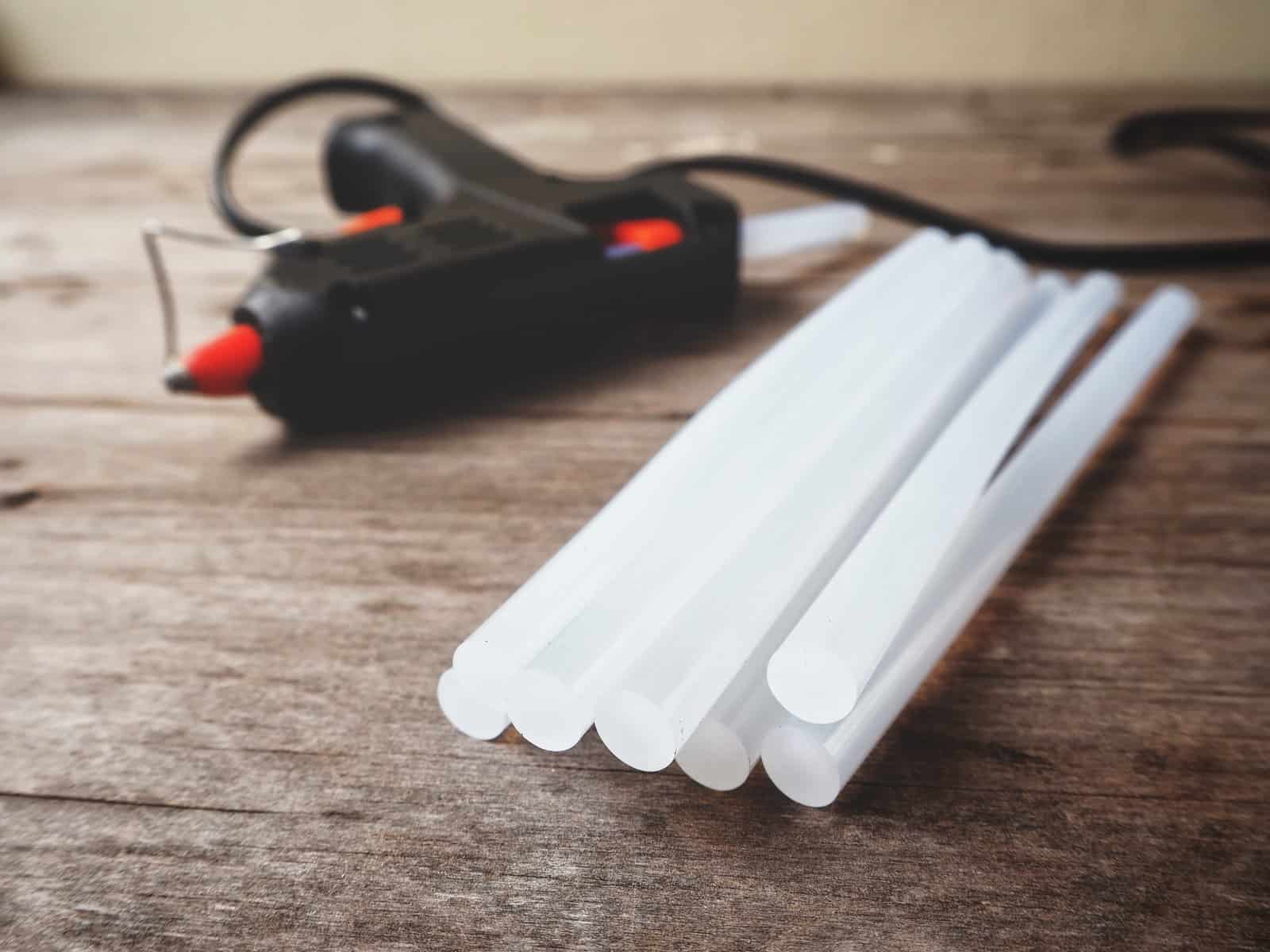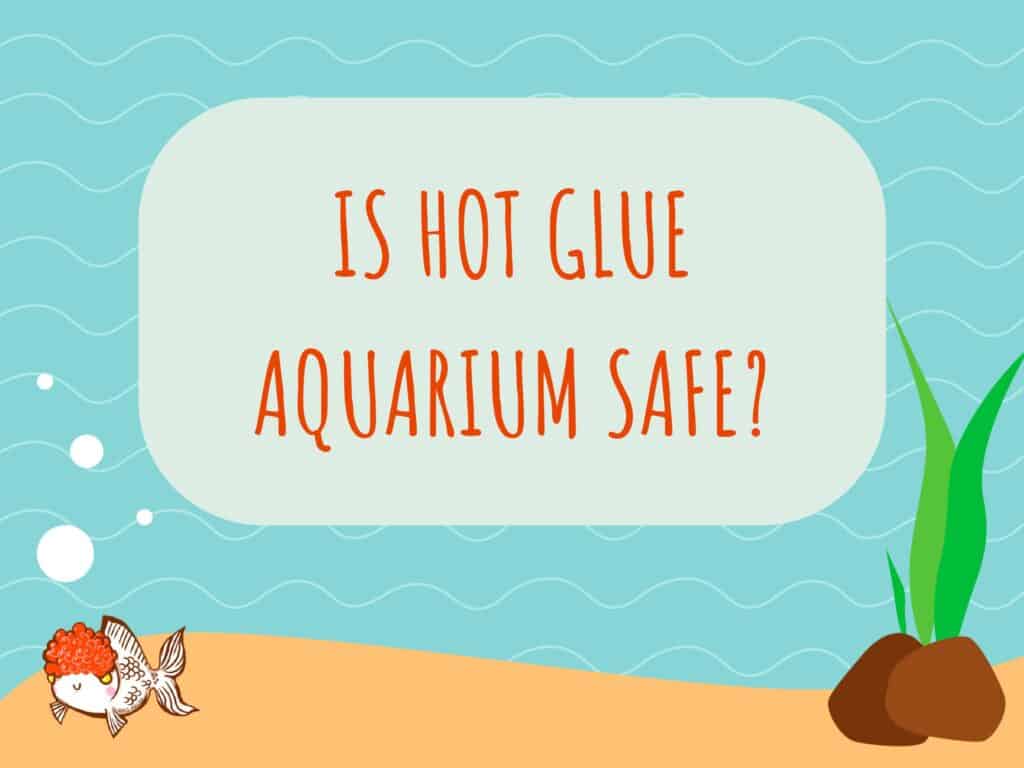There are often times when you need to repair your tank decorations or fix pieces of rockwork together securely for the safety of your fish. The easiest way to do that is by using some form of adhesive product.
But is hot glue safe for use in your aquarium water? What’s good about using hot glue in your aquarium? And will hot glue damage your aquatic plants?
Read this guide to learn all you need to know about using hot glue in your aquarium.
Is Hot Glue Aquarium Safe?
So, to cut to the chase, you can safely use hot glue in and around your aquarium.
Hot glue is non-toxic to fish and other aquatic livestock, so you can use the glue to fix broken objects in your fish tank.
What Is Hot Glue?
Hot glue is a form of adhesive that you must heat up before use. The glue starts off as a solid but melts into liquid when you heat it, so you can spread the glue over the surfaces you want to stick together.
To use hot glue, you need a portable glue gun. Glue sticks have different melting points, depending on what variety you choose and what you want the glue for.
What Is Hot Glue Made Of?
The primary ingredients in hot glue sticks are polystyrene and polymer resin. Basically, the hot glue formula is similar to that used to make the plastic that goes into disposable cups, baby bottles, and water cooler jugs.
Polystyrene and polymer resin are ground into fine powder form before being combined in an industrial mixer and then heated to form a liquid. Colophony is added to the liquid to provide its adhesive properties.
When the glue cools into a solid form, it can be used as hot glue sticks. Interestingly, the cooling process takes around one hour for every 100 grams of liquid.
Using Hot Glue
To use hot glue, you first heat the glue sticks in your hot glue gun, turning the glue to liquid. You then apply the liquid to both surfaces you want to stick together. Press the surfaces together and allow the glue to cool, creating a solid bond.
Hot glue has several benefits in that it doesn’t leave any residue, making this one of the best adhesive options.
Can You Use Hot Glue In a Fish Tank?

Yes, you can use hot glue in a fish tank.
However, there are a few drawbacks to be aware of:
- When you expose hot glue to water, fumes are released that might harm your fish. However, provided you wait until the glue has cooled and cured completely, the glue won’t harm your livestock.
- The bond created by hot glue doesn’t last as long as you’ll get with other aquarium sealants.
So, if you want to repair decorations in your fish tank, hot glue is probably not the best choice. The glue gradually separates from the bonded surface, potentially causing your repair to fail within a few days.
What Types of Glue Are Best for Use in Fish Tanks?
Some adhesives contain harmful chemicals that will poison your fish if used in an aquarium.
So, what adhesives can you use to repair broken decorations and build rockwork?
Aquarium-Safe Silicone Sealant
Aquarium-safe silicone is the go-to adhesive that’s used to construct glass fish tanks. Therefore, it’s safe to say that this adhesive is perfect for use in aquariums.
Silicon provides excellent bonding strength, which is why it’s used to fix cracks in fish tank viewing panes and bond glass panes together.
However, if you decide to use silicon for your fish tank, be sure to choose a product that contains 100% silicon. Some silicon adhesives also contain additives to help them cure quicker. But these substances could be harmful to your fish and other livestock.
Additives to avoid include:
- anti-microbial
- mildew-resistant
- bacterial protection
- mold inhibitor
Some manufacturers state on the product packaging whether the silicon is safe for aquarium use. Always double-check that the silicon you choose is labeled as “Aquarium Safe.”
Superglue
Superglue is the most popular adhesive for aquarium owners since it’s considered to be safe for use in fish tanks and only takes a few seconds to cure.
That said, we recommend that you look for superglue products that contain ethyl cyanoacrylate as the primary ingredient. That substance is completely safe for use in both marine and freshwater tanks.
Epoxy
Epoxy is not actually glue but a two-part adhesive product that you have to combine for bonding. Although epoxy creates a strong bond, it can take as long as 24 hours to completely cure. You can safely use epoxy in both freshwater and saltwater aquariums.
Again, when choosing epoxy resin for use in an aquarium, always choose a product labeled as aquarium-safe, avoiding anything that contains Isocyanates, hazardous solvents, and other nasties, including:
- n-butyl acetate
- ethyl acetate
- formaldehyde
- heavy metals, such as chromium, cadmium, lead
The main disadvantages to using epoxy products are their longer curing time and higher price point.
Aquarium-Safe Cement
Aquarium-safe cement is typically used in very large aquariums and falls into two main categories.
Acrylic cement is typically used to bond sheet material, such as sumps. In addition, many public aquariums have huge windows that are bonded together using thick, bonded acrylic materials.
There are two forms of acrylic cement:
- A thick, gel-like cement that’s used to build items with gaps in the seams, such as baffles, frag racks, and the like.
- A solvent-based, watery solution that’s used for fixing sheet edges together. The solvent uses capillary action to penetrate the joint before evaporating, leaving behind a molecularly-linked join.
Acrylic adhesive is usually a very expensive option that’s really only suitable for use in massive aquariums rather than much smaller home tanks.
PVC and ABS Materials
You often see ABS and PVC pipes in fish tanks. Those materials need a special form of adhesive to bond them effectively.
PVC and ABS adhesives use molecular bonding to fix the two pieces together into a strong, waterproof joint.
Safety First
All the above-mentioned adhesives are not safe for underwater use since they produce toxic vapors during the curing process.
You can use these products in your fish tank but only when the tank is empty for at least 24 hours. Once the adhesive has cured, you can safely fill the tank with water and put your fish and other livestock back.
FAQs
In this part of our guide, you’ll find the answers to some of the questions people often ask about using hot glue in fish tanks.
Q: Is Hot Glue Toxic in Water?
A: Hot glue is not toxic in water once it has cooled. However, if you put the repaired object into the tank while the glue is still hot, it can release potentially harmful fumes into the water.
Q: Will Hot Glue Harm Fish or Other Aquatic Animals?
A: No, hot glue won’t harm your fish or other livestock. The glue is non-toxic since it doesn’t give off any dangerous chemicals in the water and doesn’t change your water parameters.
Q: Is Hot Glue Dangerous to Aquarium Plants?
A: Hot glue is unsafe to use with live aquatic plants since the heat used will damage the plants. However, if you’re using plastic or silk plants, you can safely use hot glue.
Q: Is Hot Glue Safe To Use With Aquarium Substrate?
A: Do not allow hot glue to come into contact with the gravel or sand in your aquarium. The grains of substrate will stick together, preventing the filtration process from working properly and killing the beneficial bacteria that live in the substrate.
Q: Is Hot Glue Safe To Use for Fixing Aquarium Rocks?
A: Yes, you can use hot glue to create hardscape for your tank. However, we don’t recommend that since hot glue quickly separates from the bonded rock surfaces, leaving you back where you started.
Q: How Long Does Hot Glue Take To Dry?
A: Hot glue takes around 30 seconds to dry.
Q: How Long Does Hot Glue Take To Cure?
A: You’ll need to wait for around 24 hours to ensure that the hot glue has cured completely.
Final Thoughts
Did you enjoy our guide to using hot glue in your fish tank? If you found the information in the article helpful, please share it!
Although hot glue is safe for use in fish tanks, it’s not the best choice. Hot glue generally doesn’t provide a long-lasting repair solution, whereas other options do.
For that reason, we recommend using hot glue as a temporary fix until you can carry out the repair with stronger, more permanent glue.
What type of glue did you use to fix your fish tank decorations? Tell us in the comment box below.


